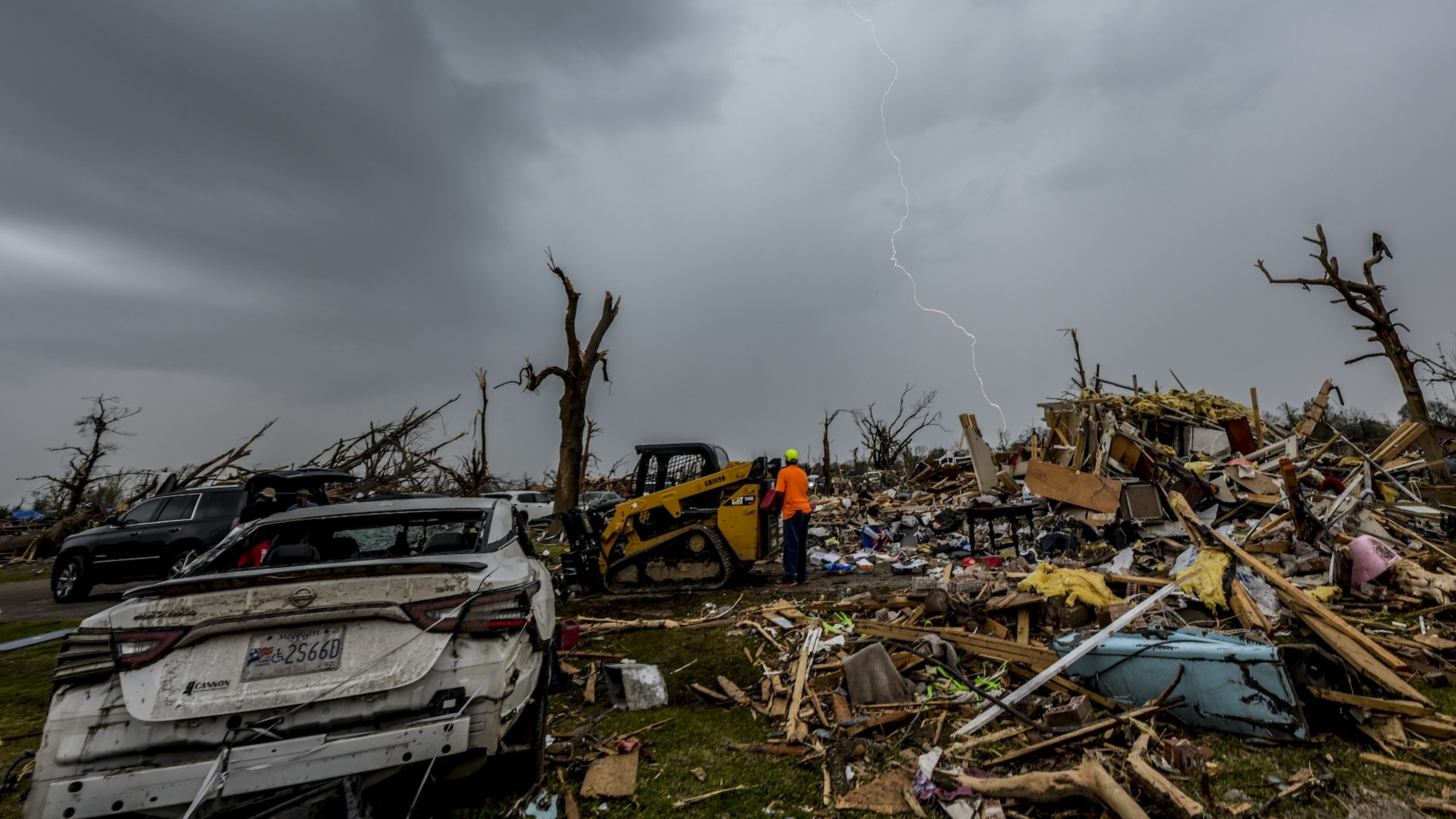

At least 25 people are dead and dozens more are injured after powerful storms and an large tornado struck the Southeast this weekend.
Officials from the Mississippi Emergency Management Agency have preliminarily given an EF-4 rating to the tornado that struck Rolling Fork and Silvery City, Mississippi on Friday March 24th. EF-4 tornadoes have top wind gusts of 166 to 200 miles per hour and represent only about two percent of all tornadoes.
[Related: Why it’s so difficult to forecast a tornado’s path.]
The tornado was estimated three-quarters of a mile wide at some points, tearing 59 miles across Mississippi for more than an hour, according to the National Weather Service’s preliminary report. Fewer than 1 percent of tornadoes in the US traveled more than 50 miles between 1950 and 2021, according to an analysis of NWS data conducted by the Washington Post. This tornado was part of a supercell, or a rotating thunderstorm, that spawned several tornadoes on Friday.
Rolling Fork Mayor Eldridge Walker told the Associated Press that the storm hit so quickly that the sheriff’s department barely had time to set off tornado sirens to warn the town of about 2,000 residents. “And by the time they initiated the siren, the storm had hit and it tore down the siren that’s located right over here,” Walker said, referring to an area blocks from downtown.
Local officials estimate that 80 to 85 percent of the town in the Mississippi’s Lower Delta region was destroyed, leaving hundreds of residents homeless. US Census data shows that over 80 percent of residents are Black and about 21 percent live below the poverty line, which is higher than the state average. Roughly 30 percent live in mobile homes, which are significantly more vulnerable to tornado damage, according to a 2018 study.
“It seemed like forever until that noise stopped. You could hear people screaming from the neighborhood,” Rolling Fork vice mayor LaDonna Sias told CNN. Sias also said that her house was demolished.
The storms knocked out power to more than 83,000 homes and businesses across Alabama, Mississippi and Tennessee by early Saturday morning, according PowerOutage.us. Power remains out to over 10,000 customers as of Monday morning.
On Sunday, President Joe Biden issued an emergency declaration for Mississippi, so that federal funds are available for recovery in the hardest hit area. Mississippi Gov. Tate Reeves also pledged that more help was on the way at a news conference.
[Related: Deadly tornadoes reveal new disaster patterns in the Southeast.]
The Cajun Navy 2016, a volunteer search and rescue group from Louisiana were in both Silver City and Rolling Fork on Sunday helping residents salvage their possessing and sifting through debris
The recovery efforts continued despite more severe weather affecting 20 million people throughout the southeast via additional storms hitting Georgia, Louisiana, Mississippi, and Alabama. Large parts of central and southern Mississippi saw thunderstorms and heavy rain, with some areas reporting tennis ball-sized hail.
Overnight severe weather can be particularly dangerous since people are less likely to receive warnings since they are asleep, and tornadoes can be more difficult to spot in the darkness. The National Oceanic and Atmospheric Administration (NOAA) suggests enabling mobile emergency alerts, listening to a weather radio, and keeping an updated tornado plan.
The Mississippi Clarion Ledger has compiled a list of ways to help residents here.